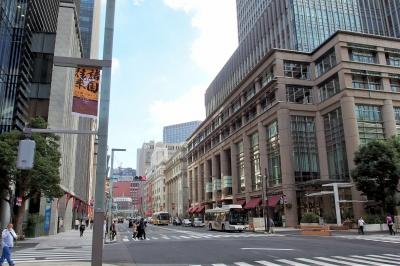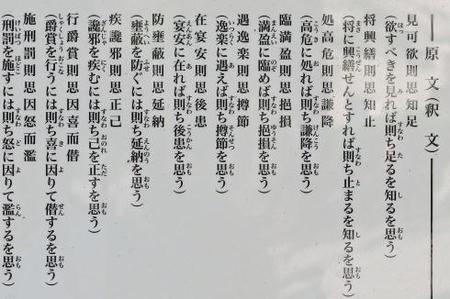From Tsukiji, take the first car of the subway Hibiya Line and get off at Kodemmacho station. When you exit the ticket gate in front of you and go up by elevator, you will see a temple. The name of this temple is "Oanrakuji Temple". This is the place where the Kodemmacho prison was located in the Edo period.
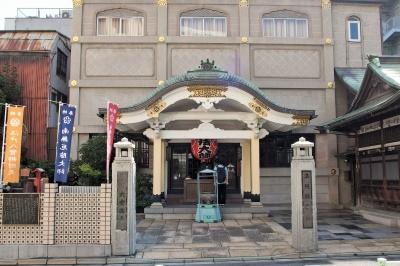
The Kodemmacho prison was 2,600 tsubo, one of the largest prisons at the time. The location is said to be around the current Daianrakuji Temple, Minobu Betsuin Temple, Jisshi Park, and Jushi Square on the site of the school, but it is said that Daianrakuji Temple is a special place with an execution site. So the red stone monument built here creates an atmosphere that cannot be tasted elsewhere.
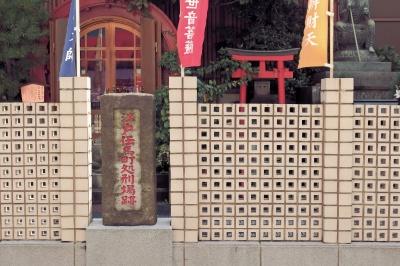
In fact, after the Meiji era, the site of this prison was a land that was hard to use. So this temple was built to comfort the spirits. It is said that the name "Oanrakuji Temple" was derived from the names of two conglomerates, Kihachiro Okura and Zenjiro Yasuda.
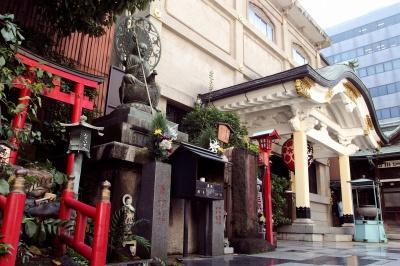
The celebrity who was executed in the prison was probably Yoshida Shoin. On October 27, 1859 during the late Tokugawa shogunate period, Ansei's prison closed his 29-year-old life. In the adjacent Jisshi Park, there is a stone monument of Yoshida Shoin, engraved with a phrase of resignation of Shoin.
Because of this kind of land, I thought that few people would visit, but surprisingly, people appeared in front of this monument. In more than a dozen minutes, he followed young men, two women, and an uncle about 80 years old. What kind of thoughts do you have to visit this place?
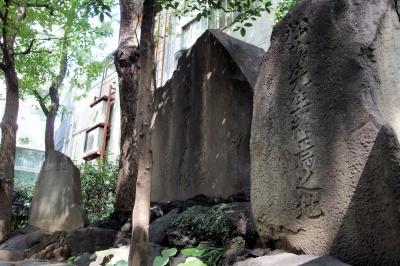
The uncle called out. It is said that you can't read the engraved characters.
I can't decay in Nobe of Musashi.
The Yamato Soul
And he managed to read it together, and then continued
21 times on October 5th
I didn't understand the meaning of it.
This uncle is from Yamaguchi Prefecture, the local of Yoshida Shoin. He said he was from Suo-Oshima floating in Setouchi, and was visited this place in honor of "Matsukage-sensei". It seemed that the way this monument was handled was poorer than I expected, and it seemed a little disappointing. When I took a picture, "I took a picture in commemoration ...", I was quite pleased, and then a hot story began. He listened in front of the stone monument, feeling that his thoughts on "Mr. Matsukage" were extraordinary.
When I looked later, the phrase of this resignation was the beginning of the "Rome Record" written in Kodemmacho prison. He began writing as a will for his disciples on October 5 (25th), and wrote about 5,000 characters on the evening of the 26th, the day before the execution. "The twenty-one great man" was the name of Yoshida Shoin.
But one sent to his disciples was lost in the turbulence of late Tokugawa shogunate. The other one was entrusted to Yoshigoro Numazaki, a prisoner who became Toshima on Hachijojima Island (also Miyakejima Island), and ten years after the sentence was released, passed to Yasushi Nomura, a former junior student, and left at Hagi's Shoin Shrine. There is a long story that it was done.
The characters engraved on the stone monument in Jisshi Park seem to be enlarged and enlarged engraving the letters of Shoin's autograph "Ryokuroku". So, the word of the resignation created by "Mr. Matsukage" probably means that he went around and returned to the sacred place of Kodemmacho.
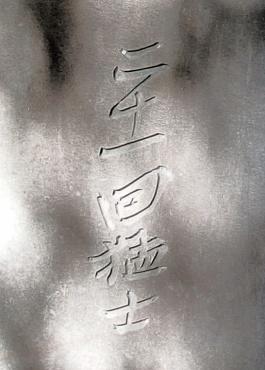
By the way, there are various historical sites in this neighborhood of Jisshi Park, and there are many things to see. Among them, what I saw today was the explanation board of "Jushinosou". I had been wondering for a long time that I could not hear Japanese, but today I was finally able to solve that question.
In the Meiji era, the school district here was the 14th elementary school district, and the sound of "Jishinoso" in the Chinese history book "Shijitsukan" was connected to 14. Jushi Elementary School ". Jushi Elementary School has disappeared, but only the romantic architecture still remains.
It seems that Ieyasu Tokugawa also referred to the idea of this ten thought in a book called Jogan Masanori. It's like an instruction read by someone who should be a leader, so maybe I've read Yoshida Shoin and Naosuke Ii.
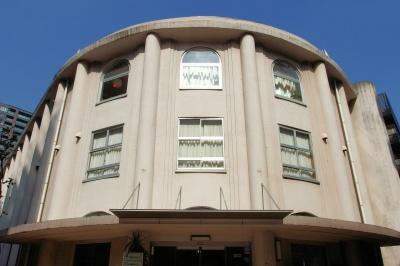
When I recall my childhood, I couldn't understand the meaning at school and was recited by the famous sentence. Was the children who studied at this Jushi Elementary School recited this Jushi?
The famous sentence that I recited as a child is now realized that it is a very good rhythm. I think that rhythm has probably been a little useful since I became an adult.
Looking at the ten thoughts translated in an easy-to-understand manner, my ears hurt a little. If you want to recit, it may be better to focus on about three thoughts.
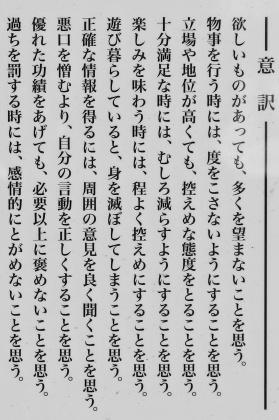
By the way, if you look at the map, you can see that this Kodemmacho area is almost halfway between the large path from Asakusabashi to Jobanbashi.
Ieyasu came to Edo and started urban development, and water and land transportation were improved, but this route was a key point for land transportation. The local merchant of Ieyasu was also attracted, and since then it has become a very prosperous place. Old town names such as Otemmacho, Kodemmacho, Bakurocho, and Yokoyamacho still remain, but some towns seem to have disappeared, such as Tonango-cho and Toyu-cho.
So if you like history, it may be fun to open an old map and walk around the area while thinking about it during the Edo period.
Are you going to Asakusabashi? Do you want to go to Jobanbashi?
If you walk from the intersection of Kodemmacho toward Ningyocho, you will see the sign of Hoda Ebisu Shrine at the first intersection. The other one seems to be the main street of the Edo period, but on October 19 and 20, there is `` Bettara City '', so today according to the instructions on the sign, toward Hoda Ebisu Shrine, the direction of Jobanbashi. I walked.
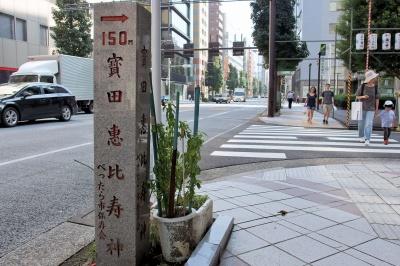
This road is a narrow street called "Ebisu-dori", and along the way there are historic sites such as the site of the mansion of Kanmi Magome, the Hoda Ebisu Shrine, and the well of Otake Dainichi Nyorai, which hit Showa-dori. The Ozu Historical Museum is located there, with good historical materials that allow you to know about the Edo period when this area flourished.
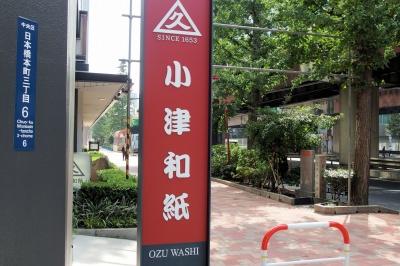
The introduction may have been reversed, but when you take a walk around here, I think it is better to first enter this Ozu Historical Museum. And it's best to walk according to the season in Betara City.
If you cross Showa-dori by the underpass, you will find the "Kusukuri Museum" and beyond, Nihonbashi Muromachi on Chuo-dori, which is close to popular downtown areas.
